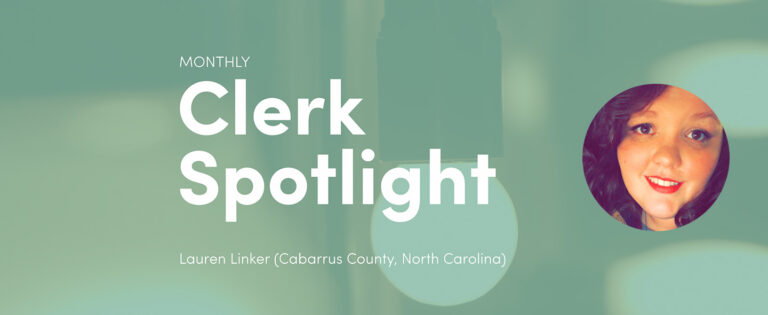
Lauren Linker
County Clerk, Cabarrus County, North Carolina
Located about 20 miles northeast of Charlotte, North Carolina, the County of Cabarrus is a place of contrasts: suburban and bucolic, softly rolling hills and the screeching tires of the Charlotte Motor Speedway. Overseeing these contrasts and the 200,000 people that call it home is the Cabarrus County government. It’s there that you’ll find Lauren Linker, County Clerk to the Board, who is already making waves less than a year into her role.
Tip #1 Create a Fast Agenda Process
I came from a jurisdiction that didn’t use any agenda management software – that meant creating a lot of documents with Google spreadsheets and designing documents in Adobe. So I had to learn how to use this software, and shortly after I arrived, we switched to govMeetings, so I had to be a quick learner. It’s been a gamechanger – I used to spend so much time putting agendas together. Now the process is fast and easy.
Tip #2 Engage on Social Media
If you are like me, you may have thought its going to open a can of worms to get started on social media, but for us we found that it was a great way to connect with citizens. I think social media and technology generally are playing a larger role. When I first started as a clerk years ago, we didn’t have any social media channels, so we launched some in the name of transparency. Since then, the tools that support social media for government have really matured.
Tip #3 Re-Think Boards Approval Processes
One change we’ve made in my time here is the citizen board appointment process. Previously, county board members would spend meeting time reading through the appointments for every citizen board in the county. It just wasn’t a very helpful or efficient way to do the best for the citizen boards. We have around 30 citizen boards and committees, so there’s a lot of applications and information that comes from each of them. I changed the appointment process so board members are given all the information during our work session meeting to discuss or ask questions and it allows them two additional weeks with the information to read through and be able to make an informed decision. The appointments are added to the consent agenda, which help with regular session meeting efficiencies. With the time saved, we instead recognize citizen board members for their dedication to our community and their time served. It’s a way to celebrate civic engagement and hopefully draw more attention to serving on those boards and committees.